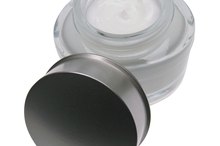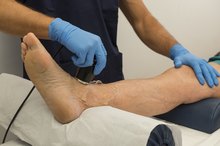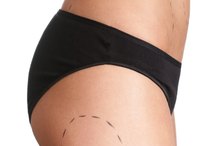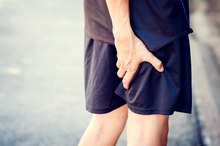Dangers of Lidocaine Cream
Lidocaine cream is a topical anesthetic used for numbing the skin in certain procedures, such as skin biopsies, hot waxing, laser hair removal and mammograms. According to the "Journal of Drugs In Dermatology," when used in small amounts and low concentrations over small areas of the body, it is considered safe. It can cause dangerous side effects when used in higher concentrations over larger body areas. After application, lidocaine cream should be washed off the hands completely. It should never be applied to broken skin.
Numbness
Pain-relieving creams, such as lidocaine, work by numbing the nerve cells in the skin. If the skin becomes too numb to feel any pain whatsoever, there is the danger of receiving a serious burn from a laser or hot wax. These procedures should always be performed by a licensed professional who knows how to use lidocaine cream, and their other equipment, safely.
Irregular Heartbeat
Harmful Effects of Triamcinolone Acetonide Cream
Learn More
A high concentration of lidocaine cream applied over a large area of the body can be absorbed into the bloodstream. This can cause the buildup of toxic levels of lidocaine within the body. According to Consumer Affairs, absorbing lidocaine in high levels can cause an irregular heartbeat that can feel like the heart is beating too fast, too slow, fluttering or skipping a beat. You may also experience dizziness or chest pain. Any of these symptoms require immediate medical attention.
- A high concentration of lidocaine cream applied over a large area of the body can be absorbed into the bloodstream.
Difficulty Breathing
Absorbing too much lidocaine into the bloodstream through the skin can also cause difficulty breathing or shortness of breath. Difficulty breathing is the feeling of not getting enough air into the lungs or not being able to take a full breath due to restricted airways. Difficulty breathing requires immediate medical attention.
Seizure
What Is Triamcinolone Actonide Cream For?
Learn More
Seizures are another danger associated with using large amounts of lidocaine cream. They are caused by altered electrical activity in the brain, according to MedlinePlus. A seizure results in loss of consciousness, along with twitching and shaking in the muscles of the body. It is a very serious situation that requires immediate medical attention.
- Seizures are another danger associated with using large amounts of lidocaine cream.
- A seizure results in loss of consciousness, along with twitching and shaking in the muscles of the body.
Coma and Death
The most serious danger of using lidocaine cream over large areas of the body is that it can induce a coma that can lead to death. A coma is a deep state of unconsciousness where there is loss of thinking abilities and awareness, according to the National Institutes of Neurological Disorders and Stroke. Death can occur if breathing function is depressed too much. A coma requires immediate medical attention and hospitalization.
- The most serious danger of using lidocaine cream over large areas of the body is that it can induce a coma that can lead to death.
Less Serious Side Effects
The less serious side effects of using lidocaine cream are mainly dermatological and include redness, itching, burning and swelling in the area where it has been applied. If any of these side effects occur, discontinue the use of lidocaine cream and wash off the area completely.
Related Articles
References
- Journal of Drugs in Dermatology: Safety of Occluded 4% Liposomal Lidocaine Cream
- Consumer Affairs: FDA Warns of Skin Numbing Product Dangers
- MedlinePlus: Seizures
- Golzari SE, Soleimanpour H, Mahmoodpoor A, Safari S, Ala A. Lidocaine and pain management in the emergency department: a review article. Anesth Pain Med. 2014;4(1):e15444. Published 2014 Feb 15. doi:10.5812/aapm.15444
- Torp KD, Simon LV. Lidocaine Toxicity. In: StatPearls. Treasure Island, FL: StatPearls; Updated March 21, 2019.
Writer Bio
Kathryn Meininger began writing and publishing poetry in 1967. She was co-founder and editor of the professional magazine "Footsteps" and began writing articles online in 2010. She earned a Doctor of Podiatric Medicine from Temple University School of Podiatric Medicine and a Bachelor of Arts in biology from William Paterson University.









